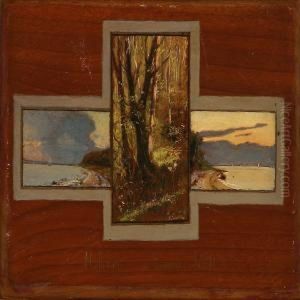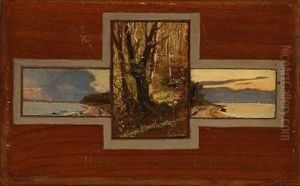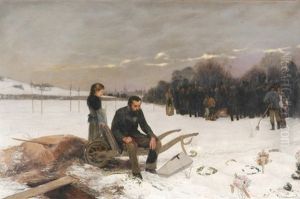Emil Schwabe Paintings
Emil Schwabe was a German artist known for his landscape paintings, portraits, and still lifes. Born on October 5, 1868, in Zwickau, Saxony, he developed an early interest in art. His father was a merchant, which offered Schwabe a comfortable childhood and the means to pursue his artistic education. He studied at the Dresden Academy of Fine Arts, which was one of the leading art schools in Germany at the time. After honing his skills under the tutelage of notable artists such as Leon Pohle and Ferdinand Pauwels, Schwabe embarked on a career that would span several decades and produce a significant body of work.
Schwabe's style was influenced by the prevailing trends of the late 19th and early 20th centuries. His early work shows the impact of the academic art training he received, with a focus on realism and attention to detail. However, as he matured as an artist, he incorporated elements of impressionism into his work, particularly in his treatment of light and color. His landscapes often depicted the German countryside, capturing the changing seasons and the rural way of life with a sense of nostalgia and tranquility.
In addition to his landscapes, Schwabe was also recognized for his portraiture. He had a keen eye for character and was able to convey the personalities of his subjects with sensitivity and depth. His portraits are characterized by their lifelike representation and subtle use of color, which allowed him to capture the mood and essence of the individual.
Despite his talent, Emil Schwabe remains a lesser-known figure in the art world. His work was appreciated in his time, and he participated in various exhibitions, earning respect among his peers. However, he did not achieve the same level of fame as some of his contemporaries, and as a result, his paintings are not as widely recognized or studied.
Emil Schwabe died on September 12, 1936, in Dresden. Although he did not leave a large mark on the history of art, his works continue to be appreciated by collectors and art enthusiasts who are drawn to his traditional style and mastery of technique. His paintings can be found in private collections and occasionally appear at art auctions, where they are valued for their craftsmanship and historical significance.



